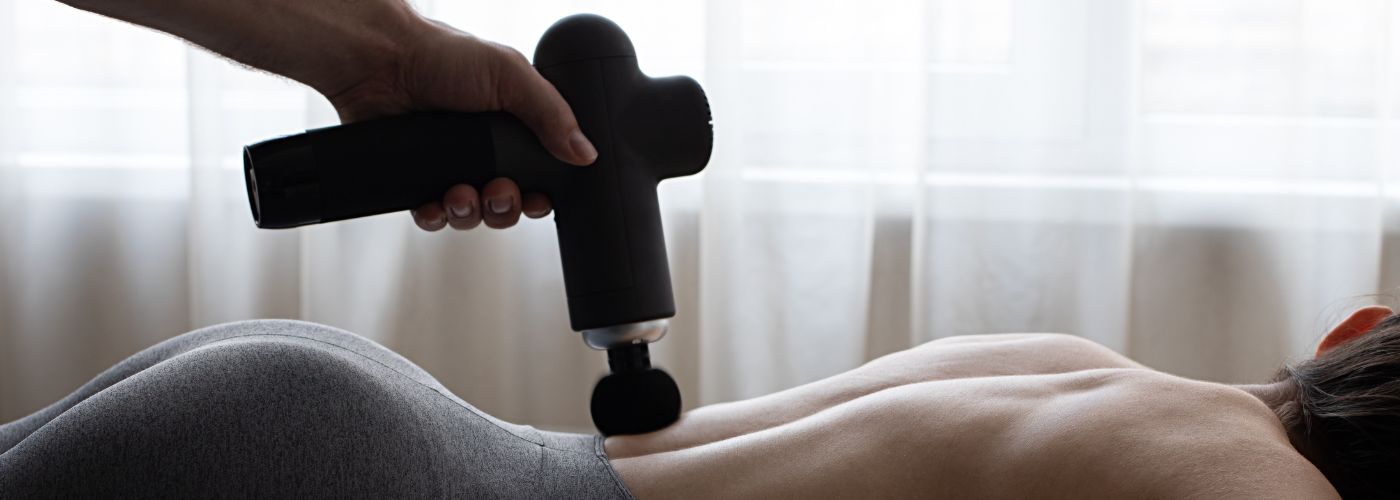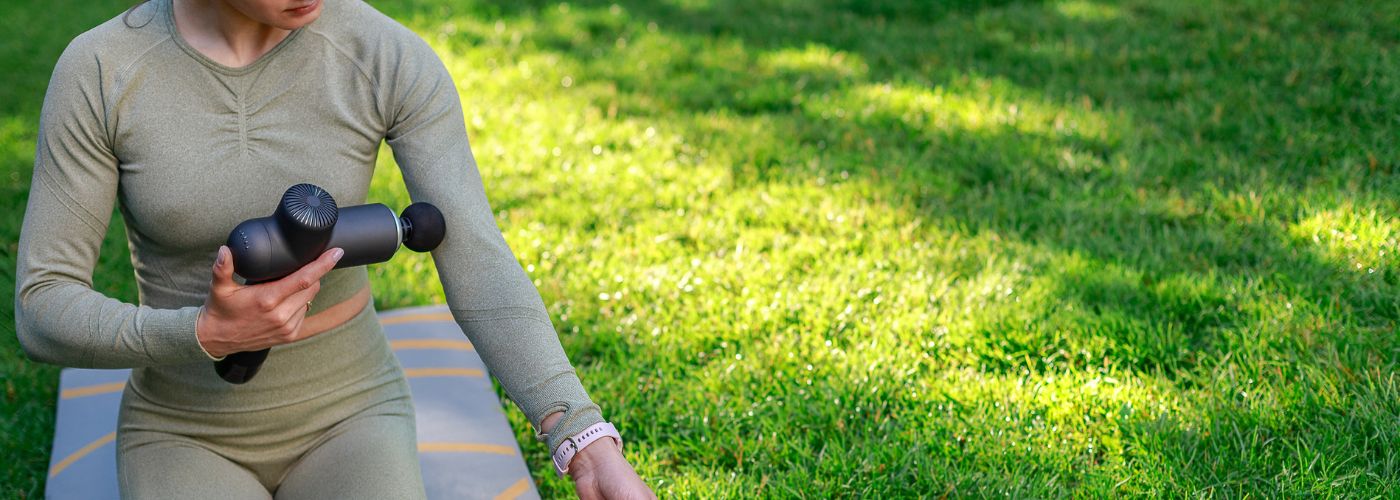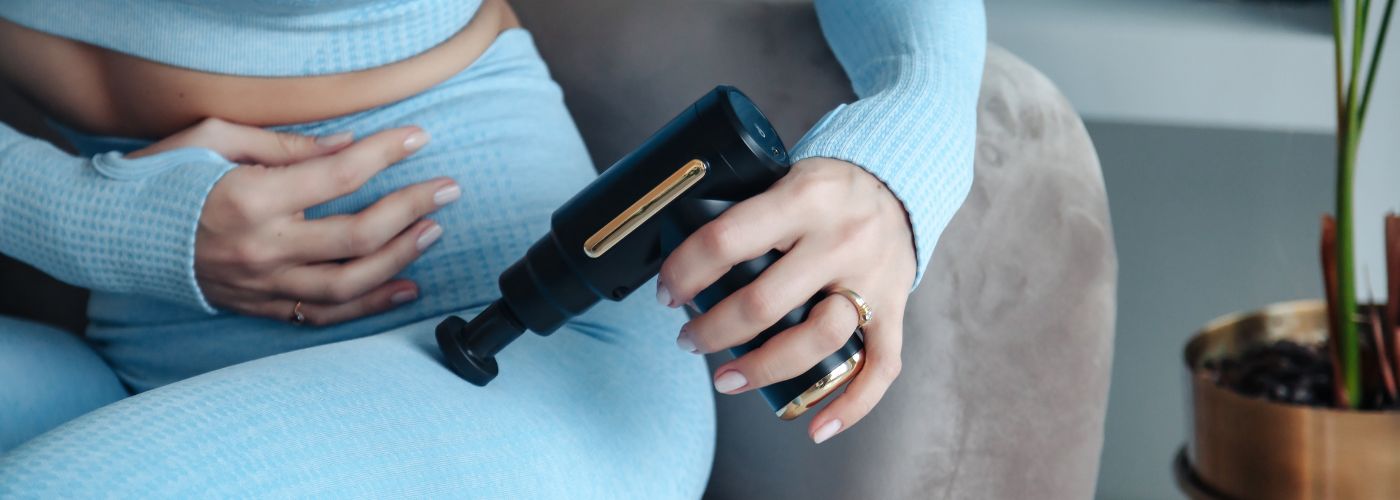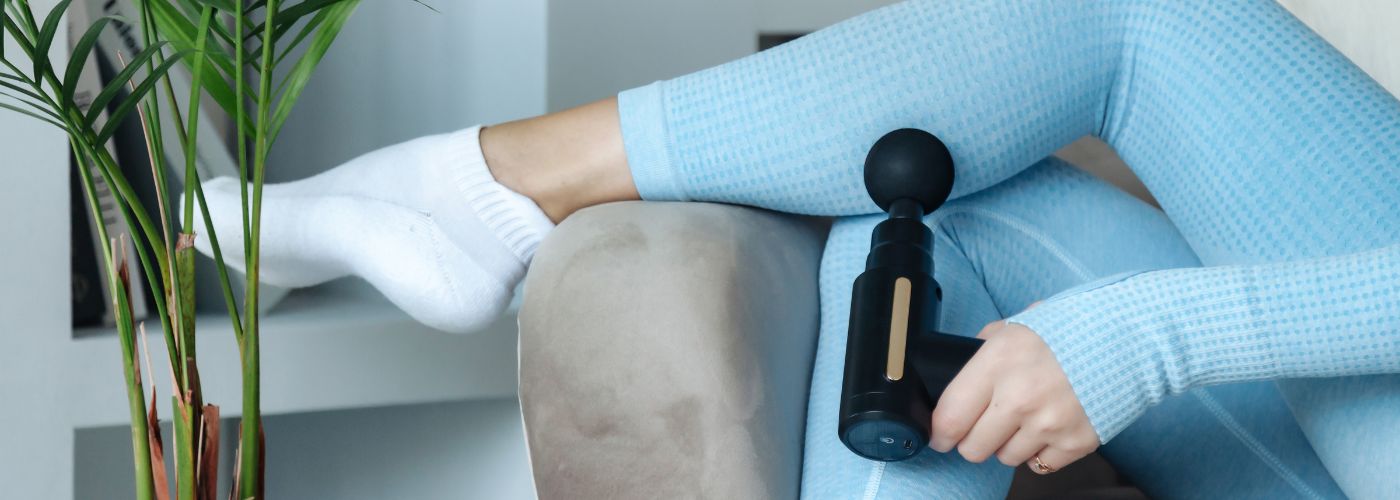There are endless natural treatments for pain, soreness, and discomfort. One of those treatments is percussion therapy. However, what is percussion therapy, and how does it work? This blog breaks down what percussion therapy is and its benefits.
What Is Percussion Therapy?
 Percussion therapy is a type of massage therapy that uses a massage gun to target specific areas of the body. The gun produces vibrations that help to loosen muscles, increase blood flow, and reduce pain. Percussion therapy has been said to be effective in treating various conditions, including chronic pain, arthritis, and injuries.
Percussion therapy is a type of massage therapy that uses a massage gun to target specific areas of the body. The gun produces vibrations that help to loosen muscles, increase blood flow, and reduce pain. Percussion therapy has been said to be effective in treating various conditions, including chronic pain, arthritis, and injuries.
Percussion therapy is commonly used on the lower back, hips, and shoulders. It is often combined with other therapeutic modalities, such as TENS/EMS devices, to provide more comprehensive treatment. There are several different types of TENS machines available on the market. They are generally inexpensive and can be purchased over the counter at pharmacies, department stores, or online. Percussion therapy works best with other natural pain relief treatments like TENS/EMS therapy.
Does Percussion Therapy Work?
 Percussion therapy, or therapeutic tapotement, is a massage that uses short, repetitive strokes to stimulate the muscles and improve circulation. The therapy is said to help relieve pain, improve range of motion, and reduce inflammation.
Percussion therapy, or therapeutic tapotement, is a massage that uses short, repetitive strokes to stimulate the muscles and improve circulation. The therapy is said to help relieve pain, improve range of motion, and reduce inflammation.
But does percussion therapy work? The research on the efficacy of this treatment is mixed. Some studies have found that percussion therapy can help treat certain conditions like chronic pain and tension headaches. Other studies have not found any significant benefits. More research is needed to determine the final results.
One certain thing is that many professional and amateur athletes use percussion therapy after a hard workout or a game day. Faster recovery means faster performance on and off the field.
How To Do Chest Percussion Therapy On Yourself?
If you’re looking for a way to relieve tension and pain in your chest, Percussion Therapy may be the answer. This type of massage uses a massage gun to apply pressure and vibration to the chest, which can help loosen up muscles and improve circulation. Here’s how to do it yourself:
1. Start by finding a comfortable position. You can sit or lie down, but make sure your back is supported to relax completely.
2. Place the massage gun against your chest, starting at the center of your breastbone and working outwards. Use light to moderate pressure, depending on what feels best for you.
3. Move the massage gun in a slow, circular motion as you work across your chest. Spend extra time on any areas that feel especially tight or painful.
Percussion therapy works best when paired with TENS/EMS therapy. TENS stands for transcutaneous electrical nerve stimulation. EMS stands for electrical muscle stimulation. The two work together to stop pain signals from reaching the brain and increase circulation to help repair damaged areas in the body. TENS/EMS therapy is another safe, side-effect-free treatment for pain, soreness, and recovery.
Is Percussion Therapy Safe?
 Percussion therapy has been used for centuries to relieve pain and promote healing. Today, percussion therapy is gaining popularity as a natural pain relief option with zero side effects. But is percussion therapy safe? This safe treatment is often supplemented with other natural pain relief therapies.
Percussion therapy has been used for centuries to relieve pain and promote healing. Today, percussion therapy is gaining popularity as a natural pain relief option with zero side effects. But is percussion therapy safe? This safe treatment is often supplemented with other natural pain relief therapies.
Studies have shown it can effectively treat various conditions, including muscle pain, arthritis, and headaches.
If you are considering percussion therapy for pain relief, speak with your healthcare provider to ensure it is safe.
Percussion therapy is a treatment that uses short, quick strikes to the body with the hands or a special instrument. The theory behind percussion therapy is that it can help improve blood flow and reduce inflammation.
Percussion therapy is usually safe when performed by a trained professional; you can also perform it yourself. However, some risks exist, such as bruising, soreness, or pain at the treatment site. Percussion therapy should not be used on broken skin or over bruises.

Related Stories
When Courage Takes Flight: Lessons From a Women’s Skydiving Record Attempt
Photo by Taylor Buffington (T-Buff) We went to Eloy, Arizona on a mission — to...
Nov
Sciatica: 1, LeBron: 0 (For Now)
File photo: LeBron James #6 of the Los Angeles Lakers. (Photo: Thearon W. Henderson /...
Oct
Pickleball vs. Tennis: The Science of Recovery
For years, tennis was the stand-in for movement: endurance, coordination, and power all at once....
Oct
5 Ways to Support Bone Strength with HiDow
World Osteoporosis Day (October 20) October 20 is World Osteoporosis Day, and chances are, you’ve...
Oct
FDA-Cleared Is a Flex. Here’s Why.
Pulling Back the Curtain You’ve seen it on boxes, on websites, in ads: FDA-cleared. It...
Sep
This Is Fibro. This Is Larry.
September is Pain Awareness Month. And we’re not here to give you medical definitions or...
Sep